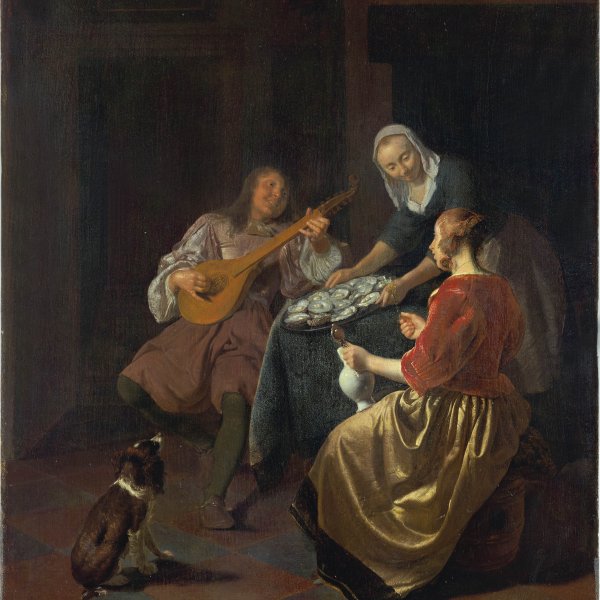Jacob Lucasz. Ochtervelt
Rotterdam, 1634-Amsterdam, 1682
Jacob Ochtervelt was baptised in Rotterdam in 1634. According to Houbraken, he trained in the studio of the painter Nicolaes Berchem (where he possibly coincided with Pieter de Hooch) between 1646, the year that Berchem returned from Italy, and 1655, when Ochtervelt is again documented in Rotterdam, marrying Dirkje Meesters that year. His earliest works reveal the influence of the Italianate painters including his master Berchem, Jan Baptist Weenix and Ludolf de Jongh. From the mid-1650s Ochtervelt began to paint genre scenes located in gardens with classical buildings, works that are notable for the monumental figures and which recall the style of Karel du Jardin. They also use a dramatic, almost theatrical lighting characteristic of the Dutch Caravaggisti. Ochtervelt gradually created his own style in which the figures and in particular the textures of the draperies are painted with great care and painstaking detail in a manner close to that of Frans van Mieris the Elder. Ochtervelt’s principal contribution to Dutch genre painting lies in his interiors of wealthy bourgeois houses, including The Grape Seller (Hermitage, St. Petersburg), and Street Musicians at a Doorway (Saint Louis Art Museum) in which groups of figures, usually musicians or street vendors are seen through a doorway on the street. Such scenes, usually located on the threshold of a house, allowed the artist to explore contrasts and connections between figures of different social classes.
It is not known at what date Ochtervelt entered the guild of Saint Luke in Rotterdam, but in 1667 he is mentioned among the candidates for presidency for the period 1667 to 1669. In 1674 he moved to Amsterdam where he worked until his death in 1682. His late works conform to the more elaborate style of Dutch art of the last third of the 17th century when the classicising manner became to prevail over Dutch realism.
It is not known at what date Ochtervelt entered the guild of Saint Luke in Rotterdam, but in 1667 he is mentioned among the candidates for presidency for the period 1667 to 1669. In 1674 he moved to Amsterdam where he worked until his death in 1682. His late works conform to the more elaborate style of Dutch art of the last third of the 17th century when the classicising manner became to prevail over Dutch realism.





